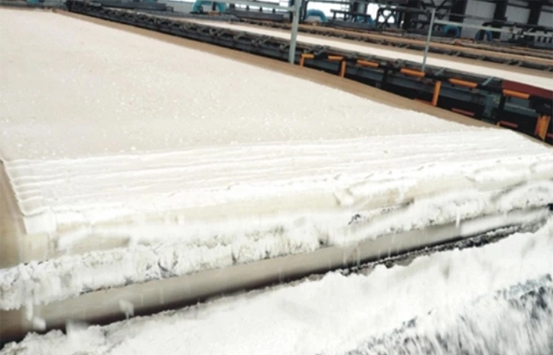Monofilament filter cloth is woven from monofilament fiber through direct weaving, with appropriate finishing techniques. The pore distribution rules are uniform, the pore size range is narrow, and the filter cloth does not have small pores between the fibers, allowing for a high separation capacity.
Advantages of monofilament filter cloth:
High strength, small deformation, woven by imported equipment, ensuring stable product quality.
The surface is treated by heat-setting to achieve high stability, not easy to deform, and uniform pore size.
The calendering process makes the surface smoother, the cake easy to release, and makes the cloth easy to clean with good regeneration performance.
Bolian monofilament filter cloth is available in polypropylene, polyester, and polyamide, mainly including the following series:
- Double-layer monofilament series, mainly for horizontal vacuum belt filter cloth;
- Single-layer monofilament series, mainly for phosphoric acid and FGD filter cloth;
- Filter press monofilament cloth series.
Bolian strictly follows the ISO9001 standard in the production of filter cloth, and each process is inspected carefully, ensuring each filter cloth meets the quality testing standards.

Monofilament filter cloth are important filter materials in various industries due to their superior physical and chemical properties.Ensuring efficient production processes and product quality.
Monofilament filter cloth is an essential filtration material in various industries due to its superior physical and chemical properties, ensuring efficient production and product quality.
As an excellent filter material, monofilament filter cloth is widely used in chemical, pharmaceutical, phosphate fertilizer, catalyst, non-ferrous metal and other industries for belt filter, vacuum drum filter, press filter and other equipment.
Choose the appropriate specification: choose the appropriate air permeability, thickness, and weave pattern based on filtration requirements.
Correct use and maintenance: check the cloth condition regularly, clean and replace it in time to ensure the filtering effect.
Environmental Adaptability: when used in special chemical or high temperature environments, it’s necessary to confirm the adaptability of the filter cloth material.